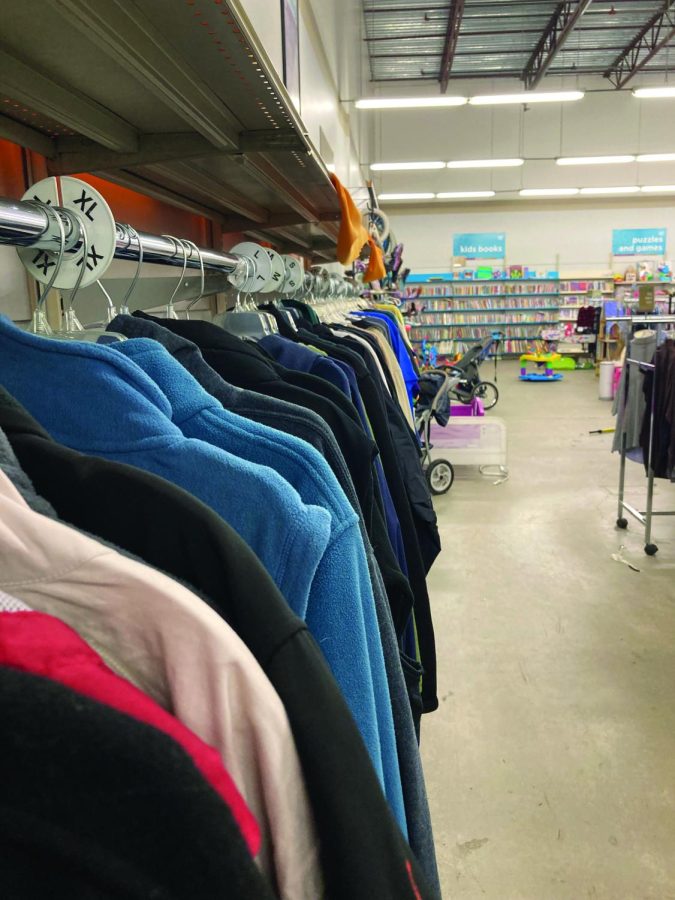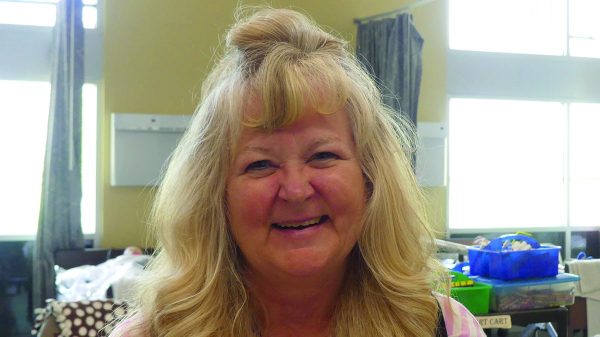Thrifting provides essential resources and benefits
Thrifting has seen an increase in popularity in the past few years as more people learn of its financial and ecological benefits. Finding new clothes in a thrift store as opposed to buying new from a clothing store has many upsides. However, there are important things to keep in mind when heading to the closest thrift store.
History of Thrift Stores
According to Environment911.org, thrift stores were originally created to provide lower-income people with the ability to find affordable necessities. Shoes, coats and other necessities are available and inexpensive at thrift stores. When individuals who have the ability to purchase these items at full price choose instead to buy them at thrift stores, it takes away that option for those in need.
To ethically thrift, it’s important to avoid purchasing items that are truly needed by others. If you need a coat for winter and don’t have the means to purchase one at full price, go to the thrift store and get a warm jacket for a fraction of the price. However, if it wouldn’t be a struggle to purchase a coat at full price, it’s better to invest in that coat and let others get ones from thrift stores.
That being said, it’s not bad to buy anything from thrift stores. Thrift stores provide jobs and prevent waste. Supporting local thrift stores helps keep opportunities open for both those needing less expensive goods as well as those needing employment.
Effects of Thrifting
Fast fashion has led to an influx of new clothing items. Because of the low quality as well as the high speed of fashion trends, these items get discarded fairly quickly. Purchasing items at a thrift store means that new pieces of clothing aren’t being created, yet someone is getting new clothing items. Overall, the lessening of clothing production would mean that landfills wouldn’t have so many cheap clothes taking up valuable space.
Maia Cuddy, president of the LHS Environmental Conservation Club, said she is a frequent thrifter because she doesn’t want to support fast fashion businesses that have large carbon emissions and treat workers unethically.
“It’s way better for the environment because it’s recycling clothes and increasing a piece of clothing’s lifespan, as well as decreases your carbon footprint,” Cuddy said.
Thrifting clothes also saves money. Many people don’t have excessive money to spend on clothing, but with thrifting, an individual can purchase a whole outfit for less than the price of one piece of new clothing. Getting more for less is an obvious upside to thrifting.
However, if someone has the ability to purchase high-quality clothing rather than thrift, it’s good to invest in those pieces, even if one can only afford a couple of these pieces a year. Buying from brands that support the environment and their workers, as well as creating long-lasting pieces, saves money for the individual in the long run. High-quality pieces last for long periods of time, which reduces the need to purchase more items. It also motivates companies to stop contributing to fast fashion and incorporate more ethical practices.
Consumption has become more and more of a problem as people get used to constantly getting new things. The most effective way to save money and make ecological decisions is to use clothes you already own. Clothing swaps with friends is another way to update your closet without spending money or increasing your consumption.
How to Most Effectively Thrift
Novice thrifters can sometimes feel overwhelmed by a whole store of unique pieces of clothing. These are good tips for thrifting, whether you believe you are an expert at finding good clothes or don’t know where to start.
Have a clear goal. Think about what you need beforehand. If you know you need more sweaters, keep that in mind. If you know that you already have enough T-shirts, keep that in mind too. Don’t buy more of something that you know you have plenty of.
Avoid impulse buys. Even though clothes from thrift stores aren’t usually expensive, buying a piece of clothing that you end up wearing once (or maybe never wearing) just wastes money and closet space. A piece of clothing doesn’t do any better sitting unused in your closet than it does sitting in a thrift store.
Shop off-season. This can lead to more success than purchasing the clothes that everyone is looking for. Look at sweaters during the summer, and browse short sleeves during the winter. Spring generally has an influx of winter clothing as spring cleaning happens.
Watch for good quality. Sometimes known brands can clue you in to the quality of a piece. But sometimes you have to feel the fabric and assess whether the item is long-lasting or will last one wear. It is also good to look for any stains or imperfections to the clothes. You can decide if you want to try and fix the item or whether it’s worth it to purchase the item knowing it has a defect.
Make it a whole experience. When planning out a trip to the thrift store, “Make it a fun activity; invite friends or listen to your favorite music,” Cuddy said. Give yourself the time to really look through a thrift store.
Set limits. Cuddy warns of the addictive habit of thrifting. She suggests putting a limit on the amount of money you spend on thrifting. A good deal doesn’t save money unless you truly need it.
Local Thrift Stores
Lewiston has several thrift stores, and there are also good options around the valley. Goodwill, Salvation Army, Idaho Youth Ranch and Grateful Threads Consignment are some of the more popular thrifting options around town. Cuddy’s favorite thrift stores outside of Lewiston include Bully-U in Colfax; Revolver, and the Storm Cellar in Moscow; and Chosen Vintage in Spokane. One thing to keep in mind is that consignment stores tend to be slightly more expensive than thrift stores because they pay for the used goods that they re-sell.







